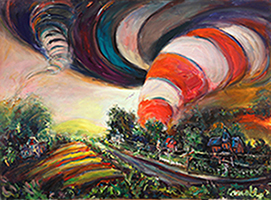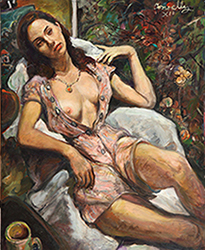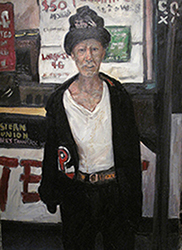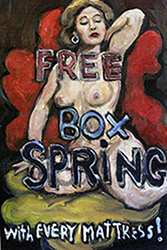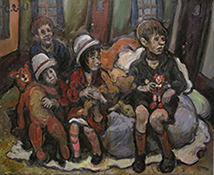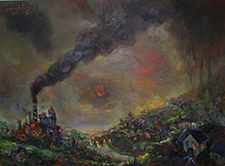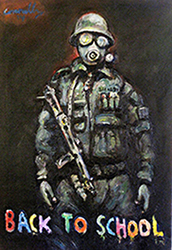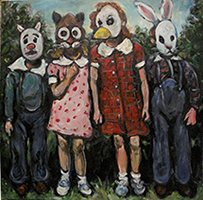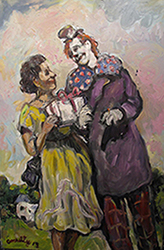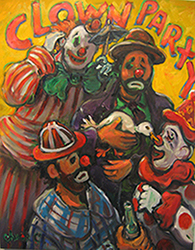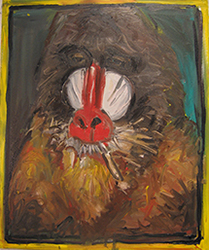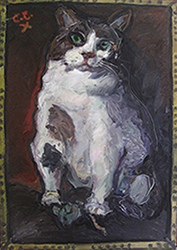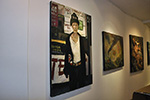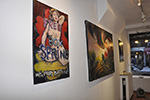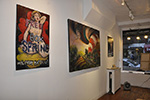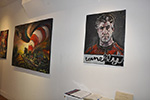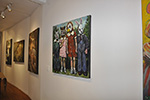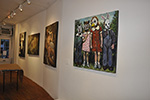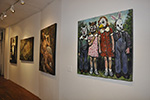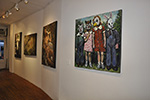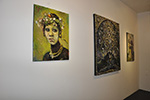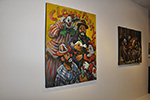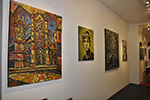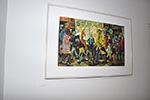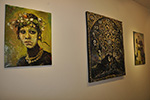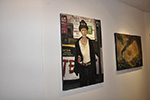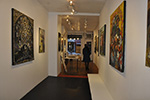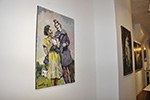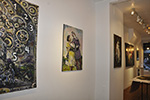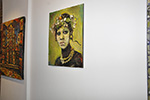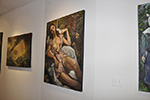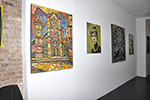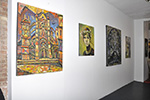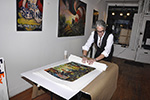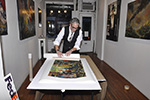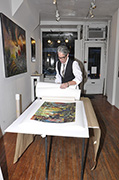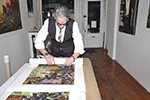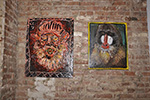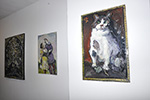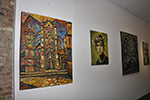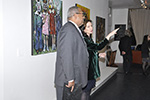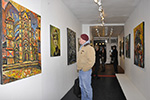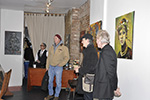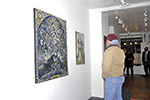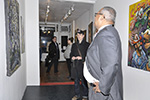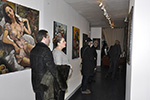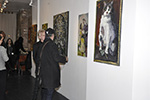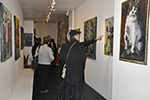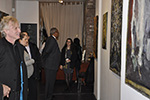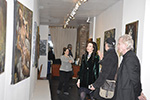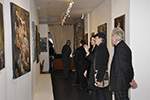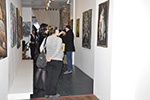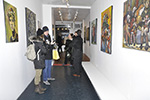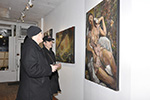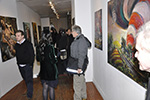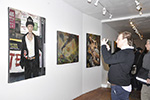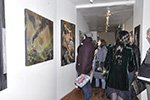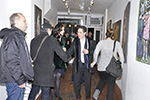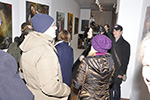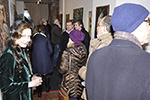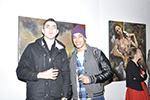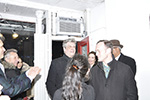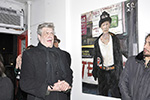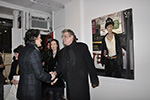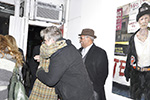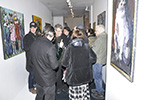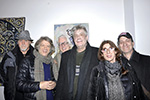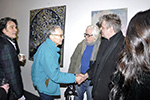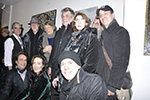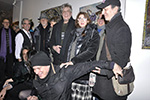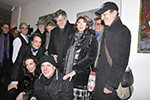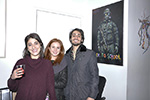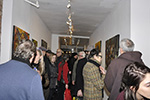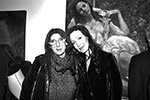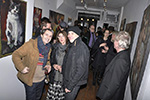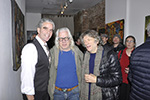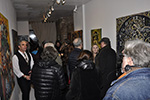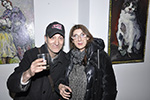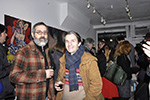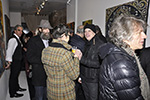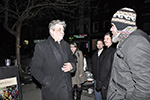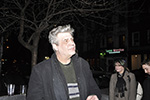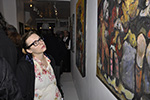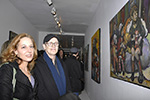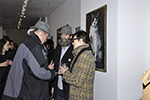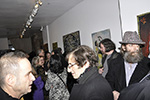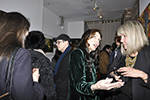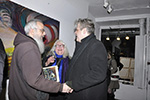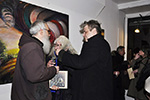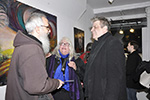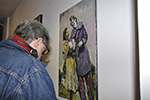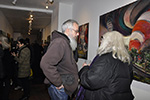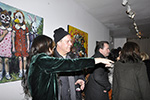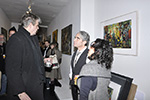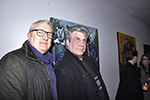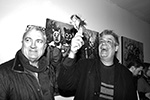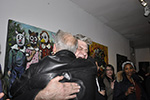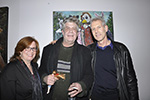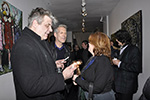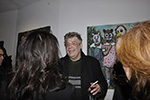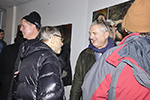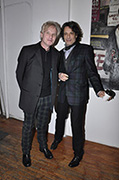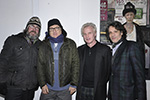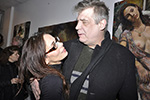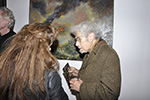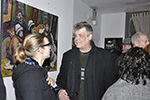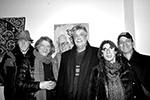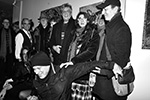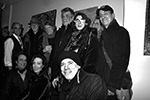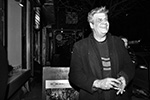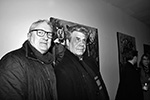Dorian Grey Gallery | Tel: 516 244 4126
Chuck Connelly
The Spirit of Vision
February 12 - March 29, 2015
Opening Reception: February 12th, 6-9 PM
RSVP : doriangreygallery@gmail.com
Chuck Connelly: The Spirit of Vision
As a fellow painter in the naturalistic vein, I find much to admire in Chuck Connelly's work (I would say "covet" or "envy," but I want to keep it polite). His paintings have an undeniable stylistic verve and a darkly human sensibility. Connelly approaches his many subjects -- and his work encompasses the everyday and the surreal, the straightforward and the allegorical -- with an almost painful tenderness. Connelly’s paintings seem to emerge, as Zola said of Manet's, from his own flesh and blood.
The picture-maker's task is basically quite straightforward. Two things are central: what you paint and how you paint it. The question of a subject, of what to paint, preoccupies the contemporary realist. Typically, the artist of today focuses on a single theme -- emblems of power and history, say, or girlish fantasies, or suburban sexual perversion -- an enterprise that is by definition delimited and curtailed. The self-imposed boundaries signify that the author is no dilettante, but rather an agent engaged in a careful exploration, a specialist who is making an emotional and intellectual investment. Before anything else, the artist is claiming an identity, which increasingly in our attention-deficit culture is reduced to a brand.
Connelly is struggling against this kind of esthetic stricture, by setting himself a task that is both simpler and more complex: he represents the sum totality of reality as he finds it. "There are no restraints on where ideas come from," he told me in a phone conversation. "Just do it and become it and get out of there and go onto something else." The objects, persons and places of his life, which constitute an explicit human content, are of a piece in a domain that includes the phantasmic spectacle that engulfs us via television and magazines, under the pretense that it is the real world, and those more mysterious and yet familiar fantasies of a different kind, the ones belonging to dreams and the subconscious. All of Connelly's work begins and ends with his experience.
Such a claim for an artist is familiar, of course, though it is not as simple as it once was. Connelly's representations have an element of strangeness, not so much because they perform distortions upon reality, but rather because reality has withdrawn from painting, diminishing its ability to represent it. At the same time, painting remains tied to the human subject in its own special way. Painting is still the "last exit," as the painter and critic Thomas Lawson once claimed, allowing the artist to penetrate the veil of popular culture, to recover the truth of feelings that technological modernity has made false.
So, the first thing is what to paint. What of the second, how it is painted? All realist painters (and plenty of photographers besides) are illustrators, as artists they have that in common, and from that point of view any differences of style are without, shall we say, substance. The importance lies in the simple circuit, the dynamic that puts the self as an ontological pivot in relation to the concrete world, a self that takes and makes and finds meaning there.
We still think that to understand a painter, we need only to look to the brushwork. A vigorous brush is thought to be expressive, and to intensify the artist’s presence. Its sensuality signals an irrational, emotional force kept just within the bounds of control, an animal expression barely contained by civilization. For an artist like Connelly, whose pictures are activated by their brushwork, the way that he paints gives his works a palpable human vitality.
We can also say that the quest for an authentic identity is central to art-making, a notion that is proven most easily by the ubiquitous self-portrait. An example from Connelly, his Self-Portrait with Name (2009), is instructive. The artist looks out at us, and presumably back at himself via a mirror, with a stare that is both intense and a little bit glazed. His ruggedly handsome face is uncosmeticized, even tired. The artist’s signature, written in cursive across the bottom of the canvas, looks to have a double meaning, for it is both jaunty and implicitly uncertain. This is "Connelly," or is it? The picture as a whole, in fact, has a vaguely demarcated vertical axis, as if it were constituted of two halves that don’t quite match up.
The issue of identity is taken up in other pictures which feature clowns, or people in masks. The subject can hide in a masquerade; identity is certainly protected in Connelly’s Back to School (2014), which shows a soldier in gas mask and combat gear. In The Gift (2004), a good-Samaritan clown towers over a woman in a bright yellow dress as they stroll along against a cloudy pink sky. She holds a beribboned present, her Ensor-like grimace echoing the clown’s own wry, white-faced smile. However odd the scene, its demeanor is most proper, even conventional. But is it truly, under those masks? The clown’s left hand, poised in mid-air at waist level, casts an ominous black shadow on his violet tunic.
Connelly's world is filled with people, and stand-ins for people, many of them ominous or uncertain, though rarely angry. A Baboon (2005) with a fire-alarm-red snout and white whiskers has the sleepy eyes of a bored zoo animal. Omo Girl (2009), a lusciously painted portrait of a young African woman with beads and a floral headdress, almost certainly has its source in a magazine or television; despite the trappings of ritual fertility, however, her face is painted pale, and she wears a disconcerted expression. Is she happy with this masquerade that she puts on for us?
Closer to the artist's studio -- his own retreat -- are Paint Table (2013) and Fluffy (2010), things that we are safe in assuming are the artist's constant companions: his palette and paints, and his tabby cat. They are close, but not without conflict. Paint Table especially, with its dark, severely worked heap of barely distinguishable jars and … what? Rags? Paper-plate palettes? Here and there is a spot of color, but mostly it’s a model of an artistic void. And Fluffy? Well, we love Fluffy, certainly, as the creature sits there, placid and waiting with its unblinking eyes, just as it always waits, with its inhuman calm. It holds beneath its front paws a mouse, though there’s no way to know if it is real or a toy.
Connelly's pictures are more than able to pull back to a grander perspective, and when they do they often take a grander scale. One of my favorites of his paintings (which is not in the Dorian Grey exhibition), features Jesus at a suburban dining table, conflating Thanksgiving dinner with the Last Supper in a pointedly uncanny scene. Here, we have Tornado (2010), which shows a bucolic country lane lined by trees and houses and a furrowed field, the sky darkened with a candy-striped funnel cloud, touching down on the horizon. It’s "a disaster that looks nice," Connelly said. A tornado like this cannot help but hint at the possibility of a cosmic experience, an allegory of nature that could just sweep us away.
The spirit and the body, such is the stuff of the esthetic belief. Connelly’s Black Snow (2010), a painting of a snow-covered house -- his own house? -- glowing in the moonlight like an eerie beacon, captures a sense of the rare magic that seeps into our everyday world. It's beautiful and strange, and suggests unknown dimensions. Especially tender is his Nude (2012), a simple study of a model relaxed in an armchair, a cup of tea within reach, not naked but rather in a pastel shift, open to the waist to expose her breasts. The painting has an honesty and plain sweetness that comes only when a painter puts brush to canvas.
-- Walter Robinson, January 2015
Press
Daily Mail
Gallery Contact:
Christopher Pusey 516 244 4126



